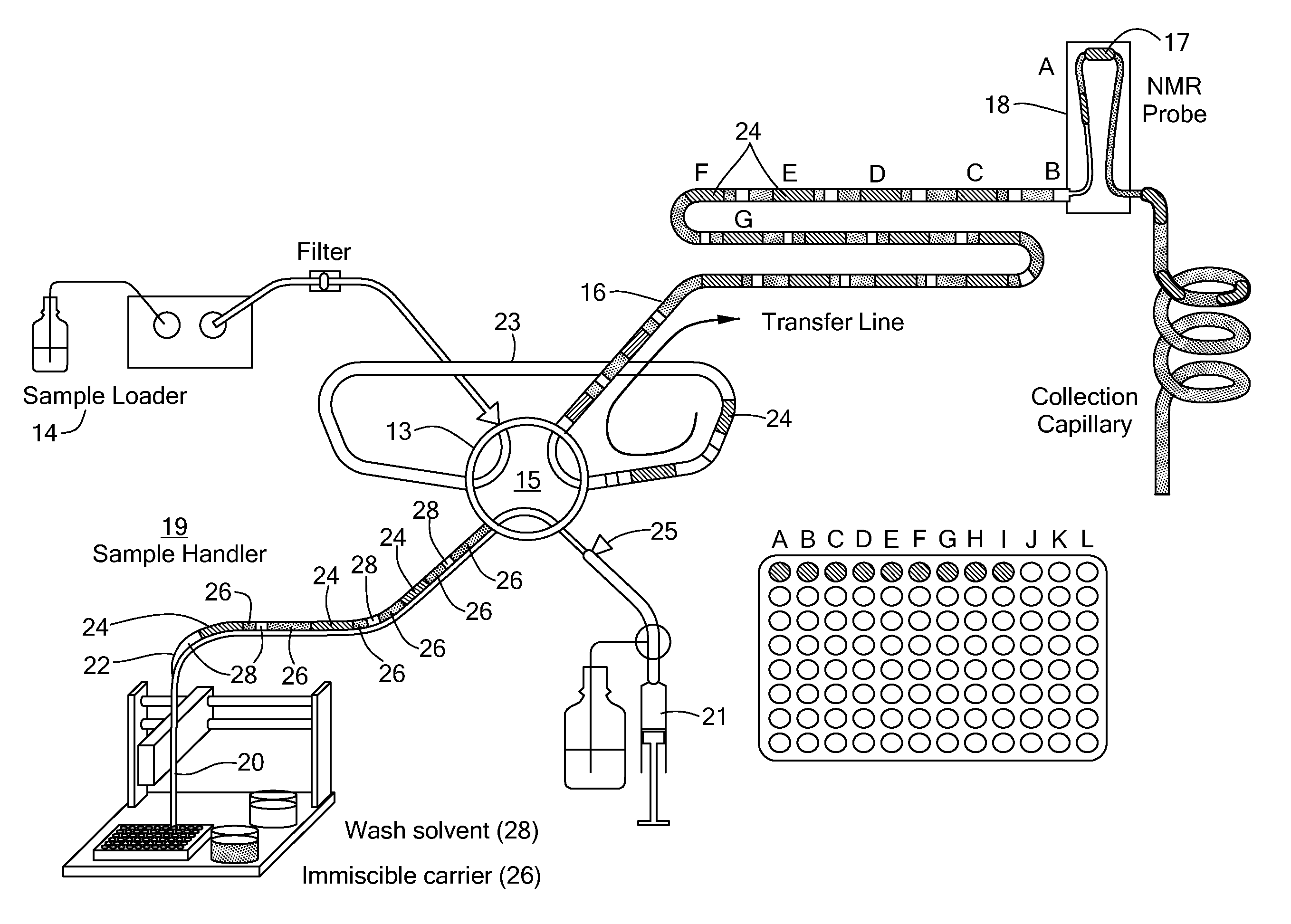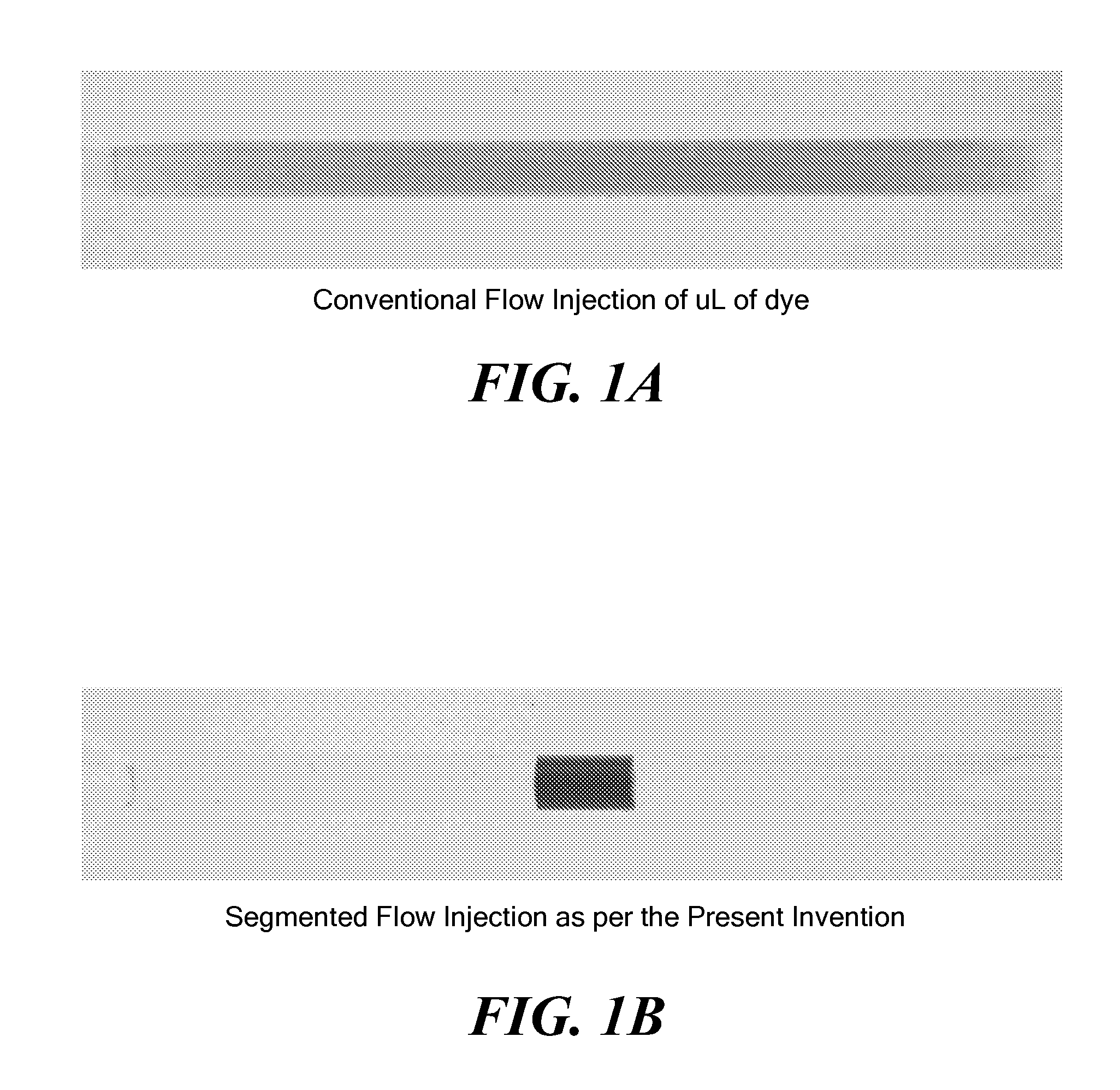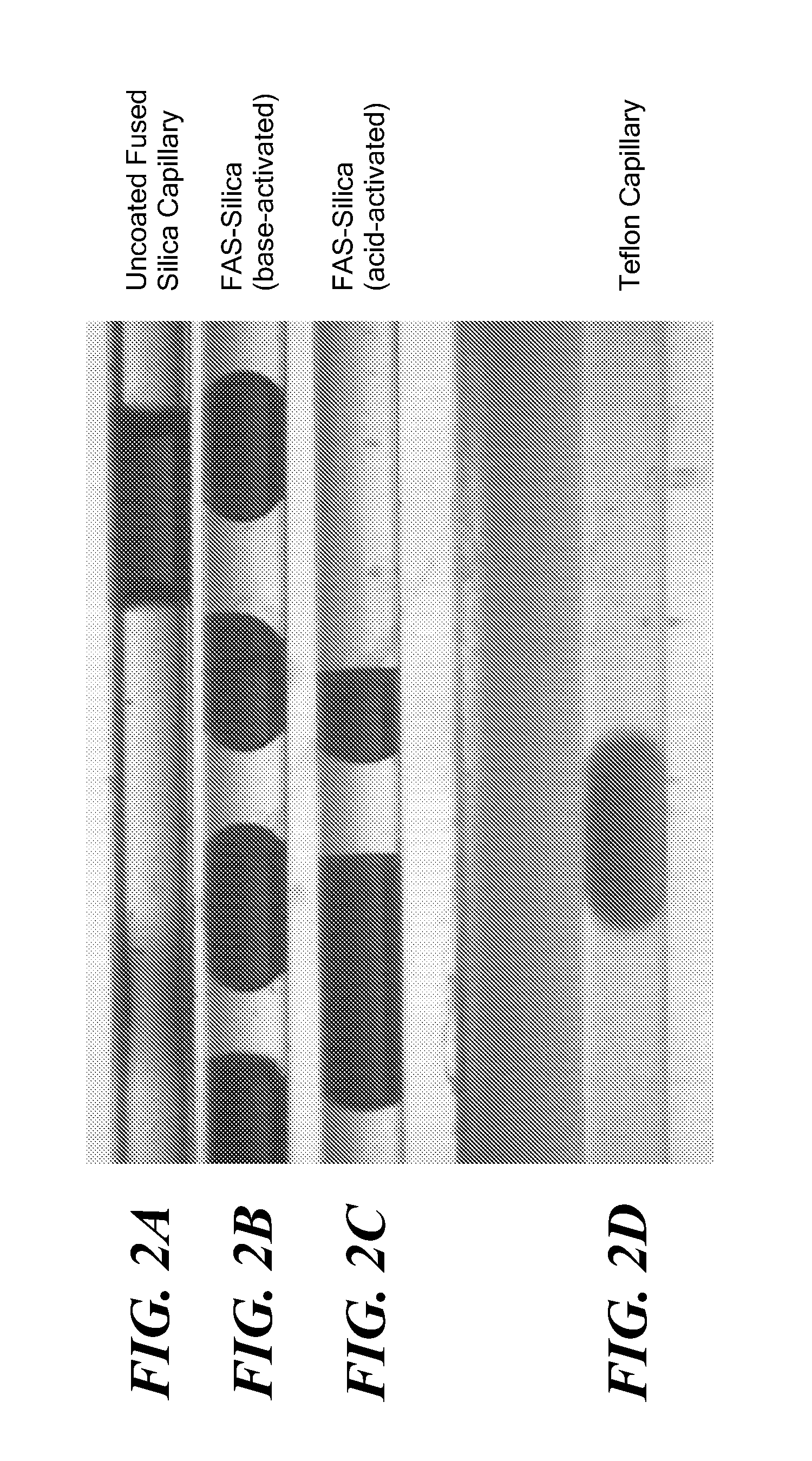Method for efficient transport of small liquid volumes to, from or within microfluidic devices
a microfluidic device and liquid volume technology, applied in the field of efficient transport, can solve the problems of high sensitivity of microscale analytical technologies, inability to efficiently load and deliver appropriate microscale samples, and low sensitivity of nmr (1000-fold less than mass spectrometry) problems, so as to avoid analyte loss, low loss, and high speed
- Summary
- Abstract
- Description
- Claims
- Application Information
AI Technical Summary
Benefits of technology
Problems solved by technology
Method used
Image
Examples
example i
Feasibility Studies and Method Development
[0045]Preliminary studies were made, observing the movement of DMSO sample plugs using FC 43 as the carrier fluid in capillaries of several different materials. In the Teflon® capillary, FC 43 was the continuous phase: DMSO plugs did not contact the capillary wall and could be moved through several meters with no detectable carryover (<0.1%) or losses at all flow rates tested (0-20 μL / min). In the plain fused-silica capillary, DMSO was the continuous phase, retention of a DMSO film depleted sample plugs by 2 μL for each meter of movement (in 200-μm capillary). In the PFOS-coated silica capillary, neither phase was continuous: a DMSO film was not retained, so sample losses were negligible at modest flow rates (1-10 L / min); however, carryover of minute droplets could occur (10-100 nL / m) if imperfections existed in the coating. It was also found necessary to push the sample train through the NMR probe under positive pressure rather than to pull...
example ii
Performance of the Automated SFA-NMR System
[0049]The performance of the automated system was evaluated by loading samples and acquiring spectra from 96-well plates with 3 μL / well of test library compounds (30 mM in DMSO-d6) interspersed with standards for assessing carryover and line shape. Automated analysis completed in 2.5 hr / plate, plus 24 min to initialize the queue in which four trains were drawn and two were injected. This initialization time is reported separately because it applied to the first plate but not to subsequent plates of continuous high-throughput operation. Spectra were output at rates of 1 / min along each train of four samples. The sample change and wash was completed in 35 s, NMR acquisition was set to 16 s, and the automation software required 10 s of execution and dead time. Sustainable throughput was 1.5 min / sample due to the time required to draw a new train from the needle line into the sample loop and to advance the queue through the gap between trains (1...
PUM
| Property | Measurement | Unit |
|---|---|---|
| dead volume | aaaaa | aaaaa |
| dead volume | aaaaa | aaaaa |
| volume | aaaaa | aaaaa |
Abstract
Description
Claims
Application Information
 Login to View More
Login to View More - R&D
- Intellectual Property
- Life Sciences
- Materials
- Tech Scout
- Unparalleled Data Quality
- Higher Quality Content
- 60% Fewer Hallucinations
Browse by: Latest US Patents, China's latest patents, Technical Efficacy Thesaurus, Application Domain, Technology Topic, Popular Technical Reports.
© 2025 PatSnap. All rights reserved.Legal|Privacy policy|Modern Slavery Act Transparency Statement|Sitemap|About US| Contact US: help@patsnap.com



